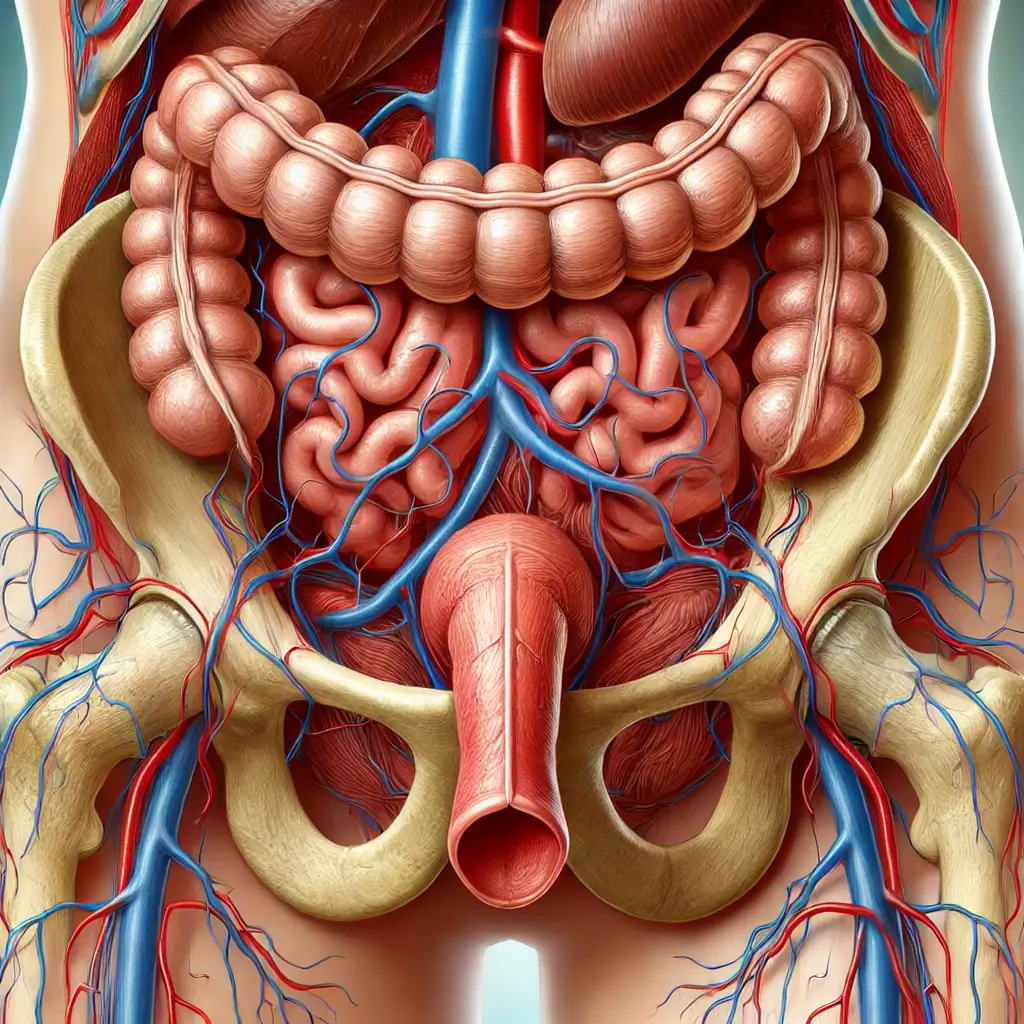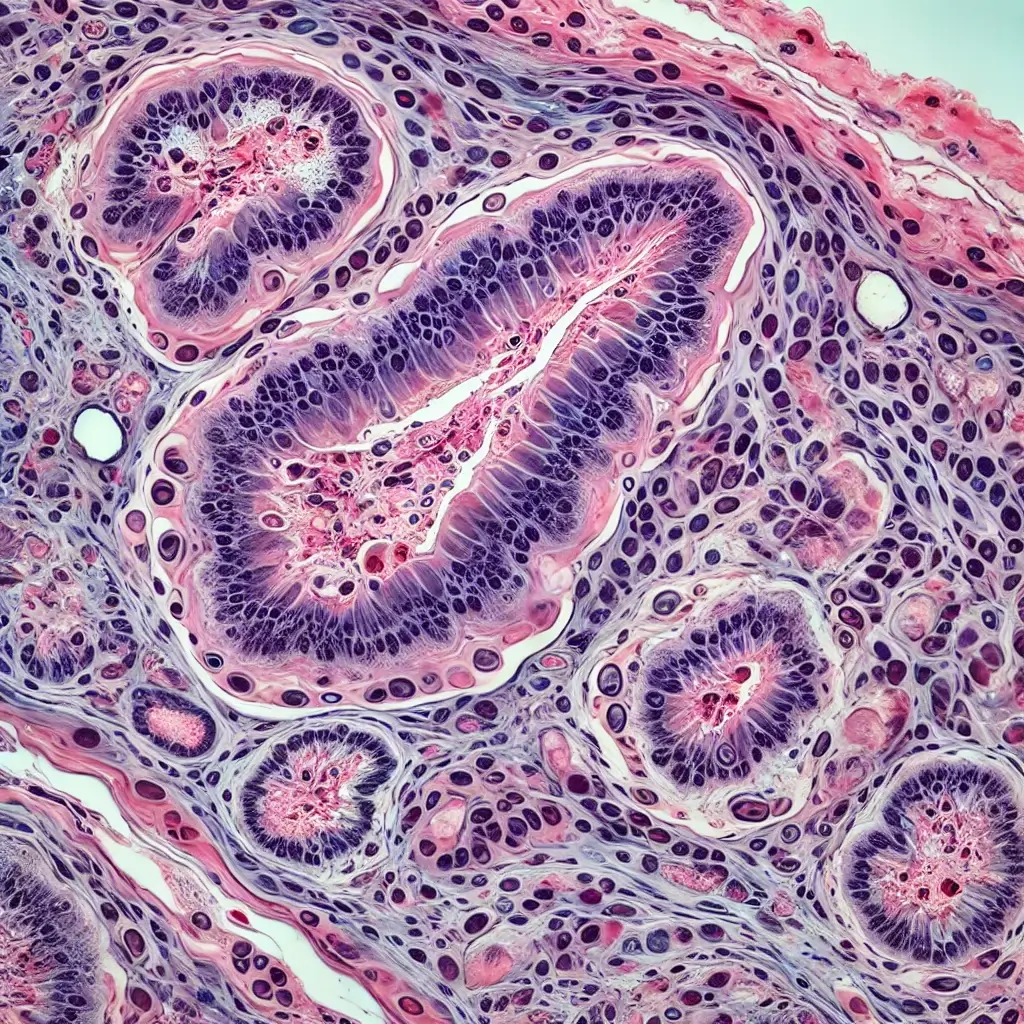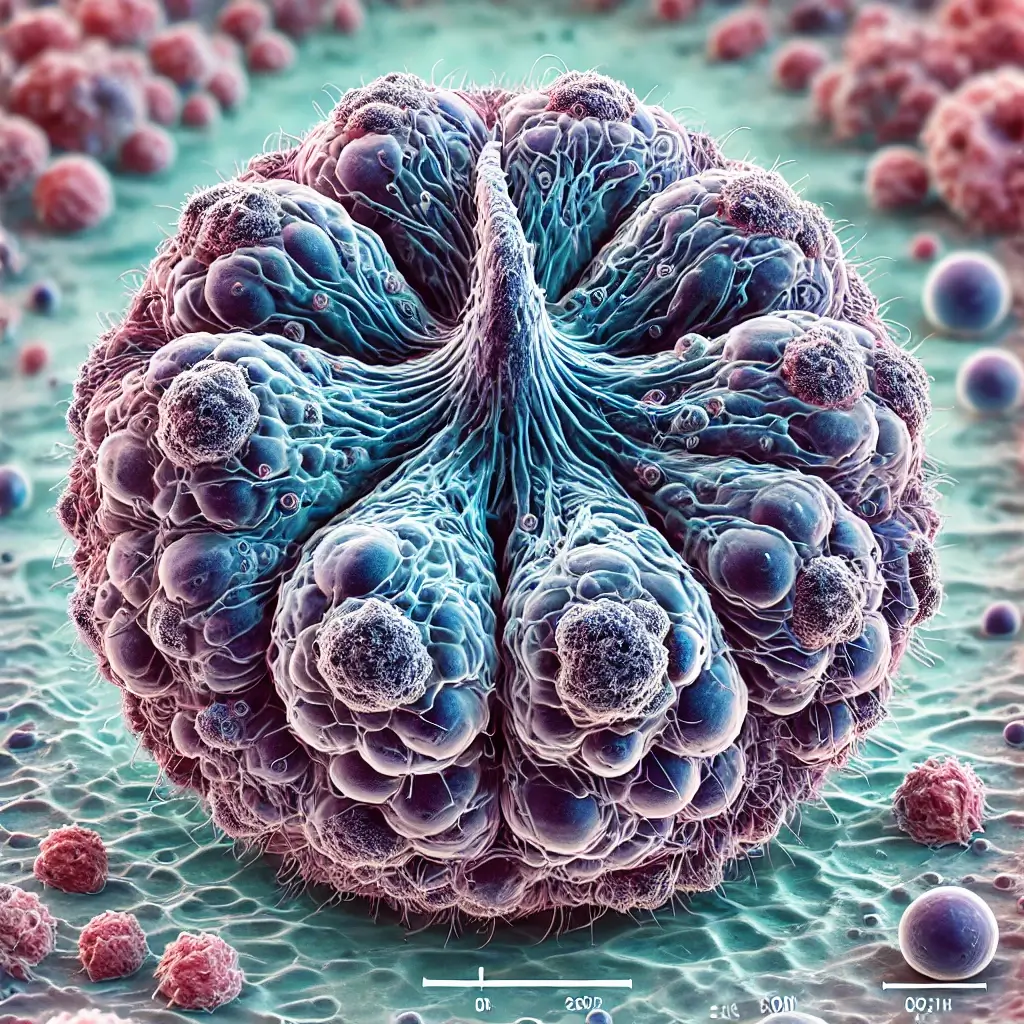Book Appointment Now
Understanding Anal Cancer

Anal Cancer Guide
Introduction
Introduction
Anal cancer is a rare type of cancer that develops in the tissues of the anus, the opening at the end of the rectum where waste exits the body. While uncommon, the incidence of anal cancer has been rising in recent decades. With early detection and advances in treatments, the prognosis for many patients has improved significantly. Awareness of symptoms and risk factors is essential for timely diagnosis and effective care.
Statistics
In the United States, approximately 9,000 new cases of anal cancer are diagnosed each year. It is more common in women than men and tends to occur in individuals over 50. The five-year survival rate is about 70% for localized anal cancer, but it decreases for advanced or metastatic disease.
Medical Illustrations
Histological section of an anal cancer cell:

Microscopic illustration of an anal cancer cell:

Risk Factors and Prevention
a. Known Risk Factors
Certain factors increase the risk of developing anal cancer:
- Human Papillomavirus (HPV): Infection with high-risk HPV strains, particularly HPV-16, is a major cause of anal cancer.
- Human Immunodeficiency Virus (HIV): Weakened immune systems in HIV-positive individuals increase susceptibility.
- Tobacco Use: Smoking significantly raises the risk.
- Receptive Anal Intercourse: Increases the likelihood of HPV transmission.
- Chronic Inflammation: Conditions like anal fissures or fistulas may contribute.
- Weakened Immune System: Due to medications, autoimmune diseases, or organ transplants.
- Age and Gender: Risk increases with age and is higher in women.
b. Prevention
- Get vaccinated against HPV to reduce the risk of infection.
- Practice safe sex and use barrier protection.
- Avoid smoking to lower risk.
- Regular screening for high-risk individuals, including those with HIV or a history of HPV-related conditions.
Screening
Symptoms and Early Warning Signs
Anal cancer symptoms can be subtle or mistaken for other benign conditions. Common signs include:
- Rectal bleeding or blood in stool
- Pain or pressure in the anal area
- Persistent itching or discharge
- A lump or mass near the anus
- Changes in bowel habits, such as diarrhea or constipation
- Narrowing of stool
If symptoms persist for more than a few weeks, consult a healthcare provider promptly.
Diagnosis
Diagnosing anal cancer involves several steps to confirm the presence and stage of the disease:
- Physical Examination: Includes a digital rectal exam and inspection of the anal area.
- Anoscopy: A small, lighted tube is used to view the inside of the anus.
- Biopsy: Tissue samples are taken from abnormal areas to confirm cancer.
- Imaging Tests: CT scans, MRIs, or PET scans determine the extent of the cancer.
- HPV Testing: Identifies the presence of high-risk HPV strains.
Stages
Types of Treatment
Overview of Treatment Modalities
The treatment approach for anal cancer depends on the stage, tumor size and overall health of the patient. Options include:
- Chemoradiation Therapy: A combination of chemotherapy and radiation is the standard treatment for most anal cancers, preserving sphincter function and avoiding surgery.
- Surgery:
- Local Resection: Removes small, localized tumors.
- Abdominoperineal Resection (APR): Used for larger or recurrent tumors, involving removal of the anus and rectum.
- Immunotherapy: Emerging treatments to enhance the immune system’s ability to target cancer cells, especially in advanced cases.
- Clinical Trials: Access to experimental therapies may benefit some patients.
Comparing Treatments
| Treatment | Mechanism | Side Effects | Efficacy (Survival Rate) | Study/Trial |
|---|---|---|---|---|
| Chemoradiation | Combines chemotherapy and radiation | Fatigue, nausea | 70% 5-year survival for localized cases | Smith et al., 2021 |
| Local Resection | Removes small tumors | Pain, infection | High for early-stage cancers | Lee et al., 2020 |
| APR Surgery | Removes anus and rectum | Permanent colostomy, pain | 50% 5-year survival for advanced cases | Carter et al., 2022 |
| Immunotherapy | Enhances immune response | Rash, flu-like symptoms | Promising in metastatic cases | Brown et al., 2023 |
Living with Anal Cancer
Managing anal cancer requires addressing both physical and emotional challenges. Tips include:
- Nutritional Support: Work with a dietitian to manage side effects of treatment and maintain proper nutrition.
- Pain Management: Consult your care team for effective strategies to alleviate pain.
- Emotional Support: Join support groups or seek counseling to cope with the psychological effects of cancer.
- Physical Therapy: May help improve mobility and address treatment-related discomfort.
- Regular Follow-Ups: Ongoing monitoring is critical for detecting recurrence or managing long-term side effects.
Additional Resources
Key Takeaways
- Anal cancer is rare, but increasing in incidence, with strong links to HPV infection and other risk factors.
- Symptoms like rectal bleeding, pain and itching SHOULD NOT be ignored.
- Chemoradiation is the standard treatment, but surgery and immunotherapy are options for advanced cases.
- Comprehensive care, including supportive therapies, is essential for managing the disease and improving quality of life.
Final Recommendations
- Be aware of persistent symptoms like rectal bleeding and seek medical evaluation early.
- Reduce risk factors by getting vaccinated for HPV, avoiding tobacco and practicing safe sex.
- Explore all treatment options with your care team and consider participating in clinical trials.
- Engage in supportive care to enhance recovery and overall quality of life.
Disclaimer
The information provided in this article is intended for general informational purposes only and should not be construed as medical advice. While every effort has been made to ensure the accuracy of the information presented, it is not a substitute for professional medical guidance, diagnosis, or treatment. Always consult a qualified healthcare provider with any questions you may have regarding a medical condition, including Anal Cancer. Do not disregard or delay seeking professional medical advice based on information found in this article. The authors and publishers are not responsible for any consequences resulting from the use of the information provided.
